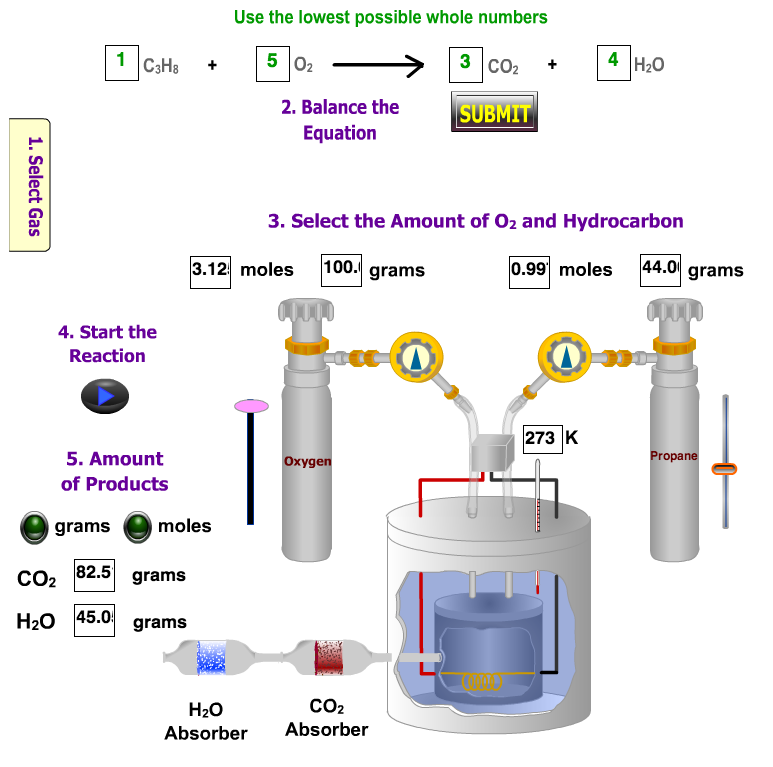I'm working on my chemistry lab report. The initial instructions were to test the hypothesis that the mass of products of a reaction will equal the mass of the reactants.
Basically we where given a equation, our job was to balance and figure out the theoretical mass of reactants, and the theoretical mass of products.
There we're a total of three questions. In the first one I got the following differential values, 0.2 and 0.1. This seemed to be the most logical for me since I knew the law of conservation of mass implied that mass cannot be created nor destroyed but could be transformed. I attributed this small differential value to this transformation theory.
However, the next two questions I attempted still gave a very large differential value (40-120), which rejects my initial hypothesis.
I believe I may have missed something in the second and third question, below are my attempted solutions.
Question 1:
Initial Equation: $\ce{CH4 + O2 -> CO2 + H2O}$
Balanced Equation: $\ce{CH4 + 2O2 -> CO2 + 2H2O}$
$$ \begin{array}{ccccccc} \ce{CH4} & + & \ce{2O2} & \ce{->} & \ce{CO2} & + & \ce{2H2O}\\ 1(12+4) & + & 2(32) & \ce{->} & 1(12+32) & + & 2(2+16)\\ 1(16) & + & 2(32) & \ce{->} & 1(44) & + & 2(18)\\ 16 & + & 64 & \ce{->} & 44 & + & 36\\ \end{array} $$
Theoretical Calculation:
$$ \begin{array}{ccc} \ce{CH4}=\pu{16g} & & \ce{H2O}=\pu{36g}\\ + & \ce{->} & +\\ \ce{O2}=\pu{32g} & & \ce{CO2}=\pu{44g}\\ \end{array} $$
Actual Calculation:
$ \ce{CO2}=\pu{43.8g}\\ \ce{H2O}=\pu{35.9g}\\ $
Differential Value(Theoretical Calculation - Actual Calculation):
$ \ce{CO2}=\pu{0.2g}\\ \ce{H2O}=\pu{0.1g}\\ $
Question 2:
Initial Equation: $\ce{C2H6 + O2 -> CO2 + H2O}$
Balanced Equation: $\ce{2C2H6 + 7O2 -> 4CO2 + 6H2O}$
$$ \begin{array}{ccccccc} \ce{2C2H6} & + & \ce{7O2} & \ce{->} & \ce{4CO2} & + & \ce{6H2O}\\ 2(24+6) & + & 7(32) & \ce{->} & 4(12+32) & + & 6(2+16)\\ 2(30) & + & 7(32) & \ce{->} & 4(44) & + & 6(18)\\ 60 & + & 224 & \ce{->} & 176 & + & 108\\ \end{array} $$
Theoretical Calculation:
$$ \begin{array}{ccc} \ce{C2H6}=\pu{60g} & & \ce{H2O}=\pu{108g}\\ + & \ce{->} & +\\ \ce{O2}=\pu{224g} & & \ce{CO2}=\pu{176g}\\ \end{array} $$
Actual Calculation:
$ \ce{CO2}=\pu{78.59g}\\ \ce{H2O}=\pu{48.2g}\\ $
Differential Value(Theoretical Calculation - Actual Calculation):
$ \ce{CO2}=\pu{97.41g}\\ \ce{H2O}=\pu{48.2g}\\ $
Question 3:
Initial Equation: $\ce{C3H8 + O2 -> CO2 + H2O}$
Balanced Equation: $\ce{C3H8 + 5O2 -> 3CO2 + 4H2O}$
$$ \begin{array}{ccccccc} \ce{C3H8} & + & \ce{5O2} & \ce{->} & \ce{3CO2} & + & \ce{4H2O}\\ 1(36+8) & + & 5(32) & \ce{->} & 3(12+32) & + & 4(2+16)\\ 1(44) & + & 5(32) & \ce{->} & 3(44) & + & 4(18)\\ 44 & + & 160 & \ce{->} & 132 & + & 72\\ \end{array} $$
Theoretical Calculation:
$$ \begin{array}{ccc} \ce{C3H8}=\pu{44g} & & \ce{H2O}=\pu{72g}\\ + & \ce{->} & +\\ \ce{O2}=\pu{160g} & & \ce{CO2}=\pu{132g}\\ \end{array} $$
Actual Calculation:
$ \ce{CO2}=\pu{82.5g}\\ \ce{H2O}=\pu{45.0g}\\ $
Differential Value(Theoretical Calculation - Actual Calculation):
$ \ce{CO2}=\pu{49.5g}\\ \ce{H2O}=\pu{27.0g}\\ $
Not sure if it matters, but we where given this program to enter our calculations to simulate the reactions.

